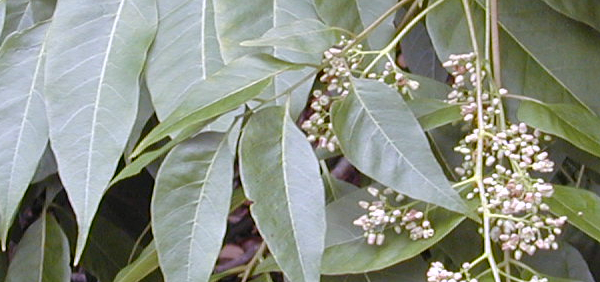gostani :
 The plant Myristica malabarica Linn belongs to the family Myristicaceae. This plant is endemic to India
& found commonly in Western Ghats. It is an important medicinal plant commonly known as Malabar
nutmeg, rampatri or Bombay mace. Different chemical constituents such as Malabaricones,
Malabaricanal, Isoflavones and many other compounds are isolated and tested for pharmacological
activity. Myristica malabarica is traditionally used for anti-ulcer, sedatives hypnotics, antimicrobial,
nematicidal and as anti-inflammatory.
The plant Myristica malabarica Linn belongs to the family Myristicaceae. This plant is endemic to India
& found commonly in Western Ghats. It is an important medicinal plant commonly known as Malabar
nutmeg, rampatri or Bombay mace. Different chemical constituents such as Malabaricones,
Malabaricanal, Isoflavones and many other compounds are isolated and tested for pharmacological
activity. Myristica malabarica is traditionally used for anti-ulcer, sedatives hypnotics, antimicrobial,
nematicidal and as anti-inflammatory. Taxonomical Classification
Kingdom: Plantae - Plants
Class: Magnoliopsida - Dicotyledons
Family: Myristicaceae
Genus: Myristica
Species: Myristica malabarica
VERNACULAR NAMES
Sanskrit: Bandhukapushpa, Gostani.English: Bombay mace, false nutmeg
Hindi: Ramptri, Bambay-jayphal
Telugu: Adavijaikaya, Adividzajikaya.
Tamil: Colaivenkai, Kattujatikkai.
Malayalam: Ponnampoovu, Kottappannu, Pathiripoovu, Panampalka.
Kannada: Kanage, Doddajajikai.
Synonyms
Synonyms in Ayurveda: gostani, vanyajati, kamuk, malatiPhytochemistry:
The plant Myristica malabarica was found to contain various phytoconstituents such as Isoflavones, Diarylnonanoids which consists of Malabaricones A-D, Tannins and several other phytochemicals are also considered to be present in the plant. A brief study of phytoconstituents is needed for this plant.Morphology:
Geographical distribution:
Myristica malabarica Lam. (Myristicaceae) is a perennial tree about 25m tall. It is endemic to India and found widely distributed in Western Ghats forest region. Now it is a vulnerable species according to IUCN red list. Hence it must be preserved.General Use:
The plant Myristica malabarica is traditionally used as medicine and spices in food. The aril is used as febrifuge, cooling, expectorant. In Ayurveda, aril is used for many conditions related to vata such as, fever, bronchitis, cough and burning sensation. The fat extracted from seed is used to treat indolent ulcers, analgesics and for rheumatism. In Ayurveda, for disorders in vata seed fat is used for myalgia, sprains and sores. The plant is also used for anti-inflammatory, Analgesic, anti-ulcer, sedative, hypnotic, and antimicrobial actions.Therapeutic Uses:
The fruits, seeds, aril, bark and other parts of the plant extractives is found out to have various pharmacological activities like anti-cancer, nematicidal, anti-fungal, anti-bacterial, anti-ulcer, antioxidant, anti-diabetic and anti-promastigote.KEY WORDS: Myristica malabarica, Malabaricones, sedative, hypnotics, anti-ulcer, antimicrobial
- » Classification and names of gostani
- » Synonyms and definitions of gostani
- » Drug Properties of gostani
- » Chemical Constituents of gostani
- » Standardization of gostani
- » Parts used and Dosage of gostani
- » Morphology and Histology of gostani
- » Distribution and Conservation of gostani
- » Cultivation of gostani
- » gostani in the market
- » Medicinal Uses of gostani
- » Researches and clinical trails of gostani
- » gostani in other sytems of medicine
- » Ayurvedic formulations with gostani
- » Images of gostani













